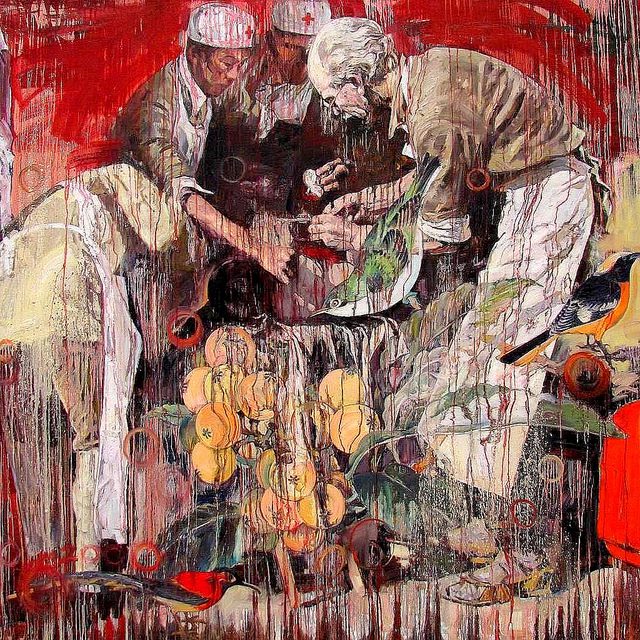Satish Saroshe
Indore, India

A frontline surgeon, noted medical innovator, and early proponent of universal health care, Henry Norman Bethune was best known for his services in World War I, the Spanish Civil War, and above all for selfless work in war-torn China, treating sick Chinese villagers and wounded soldiers. He was one of the key figures who materialized the concept of the mobile medical unit.
He was born in 1890 in Gravenhurst, Ontario, the son of a clergyman. He followed in his grandfather’s footsteps and chose the medical field, but interrupted his studies when World War I broke out, joining the Field Ambulance Medical Corps and even working as a stretcher-bearer at Ypres. He resumed his studies in 1916 and obtained his bachelors in medicine from the University of Toronto, where one of his classmates was Fredrick Banting. In 1917 he joined the Royal Navy as a surgeon lieutenant at the Chatham Hospital in England. On February 3, 1922, he was elected Fellow of the Royal College of Surgery of Edinburgh.
In 1926 Dr. Bethune contracted tuberculosis and went for treatment to the Trudeau Sanatorium in Saranac Lake, New York, where the established treatment was complete bed rest. For eight years he worked assiduously studying role of thoracic surgery and pneumothorax in tuberculosis, even inventing several medical and surgical instruments, some of which are used even today.
Inspired by the philosophy of socialism Bethune went to Spain in 1936. There he organized a mobile blood transfusion service by setting up a blood bank close to the front lines, the first in the history of military medicine. Working on the principle of helping the wounded quickly, Dr. Bethune’s mobile blood transfusion team was giving up to one hundred blood transfusions per day.
In 1937 Japan invaded China, and the Chinese Communists under their Mao Zedong were trying to resist the Japanese invaders. In January 1938 Dr. Bethune headed for China, leading the Canadian-American mobile medical unit to join the 8th army in the Shanxi-Hobeifor border region of China. In June he met General Nie in Jingangku village on the Wutai Shen Mountain, which was his headquarters. Bethune was appointed medical advisor for the frontier region. He worked feverishly to examine the wounded and performed many operations. He even invented a wooden carrying case to transport drugs and supplies. He also set up an operation table for mobile units called as Lugou qiao (Marco Polo Bridge).
His motto at the frontier was: “Go to the wounded. Don’t wait for the wounded to come to you.” He set up military mobile units, especially to aid the guerrilla warfare campaign waged by Chinese against the Japanese army. He even wrote a book known in Chinese as Youjizhan zhong shi yezhan yiyvan de zuzhi he jishu translated in English as Organization and technology of division field hospitals in guerrilla war.
He became a true military hero in April 1939 when he and his team performed 115 operations in just sixty-nine hours during the battle of Qihui. It is said that Chinese soldiers used to cry out in the battle, “We fight at the front. If we are wounded, we have (Bethune) to treat us, Attack!”
On November 1, 1939, Bethune contracted septicemia while operating on a soldier whose head wound was badly infected. He died on Nov 12 at Huangshikou. On December 21, 1939, Mao Zedong wrote his famous text “In Memory of Norman Bethune,” calling on the people to assimilate Bethune’s spirit and emulate his “utter devotion to others without any thought of self.” He wrote, “We must all learn the spirit of absolute selflessness from him. With this spirit everyone can be very useful to the people. A man’s ability may be great or small but if he has this spirit he is already noble-minded and pure, a man of moral integrity and above vulgar interests, and a man who is of value to the people.” For many years the children in Chinese elementary school were required to remember the eulogy written by Mao Zedong in praise of Dr. Norman Bethune.
“When Chinese school children are taught about the value of helping humanity, the story they are told is the Norman Bethune story.”
—Tony Clement, President, Treasury Board, Canada
And this same pallid moon tonight,
Which rides so quietly, clear and high,
The mirror of our pale and troubled gaze,
Raised to a cool Canadian sky.
Above the shattered mountain tops,
Last night, rose low and wild and red,
Reflecting back from her illumined shield,
The blood bespattered faces of the dead.
To that pale disc, we raise our clenched fists,
And to those nameless dead our vows renew,
“Comrades, who fought for freedom and the future world,
Who died for us, we will remember you.”
— Poem by Dr. Bethune, published in the Canadian Forum, July 1937
References
- “Norman Bethune Biography.” TheFamousPeople. http://thefamouspeople.com/profiles/norman-bethune-476.php. Accessed January 2, 2016.
- Hilary Russell. “Norman Bethune.” The Canadian Encyclopedia. http://thecanadianencyclopedia.ca/en/article/norman-bethune/. Accessed January 2, 2016.
- James Marsh. “Norman Bethune: Greatest Canadian?” The Canadian Encyclopedia. http://thecanadianencyclopedia.ca/en/article/norman-bethune-greatest-canadian-feature/. Accessed January 2, 2016.
- Shenwen Li. “Bethune, Henry Norman.” Dictionary of Canadian Biography, vol. 16. University of Toronto/Université Laval. http://biographi.ca/en/bio/bethune_henry_norman_16E.html. Accessed January 2, 2016.
- Mao Tse-tung (Mao Zedong). “In Memory of Norman Bethune.” Marxists.org. https://marxists.org/reference/archive/mao/selected-works/volume-2/mswv2_25.htm. Accessed January 2, 2016.
- “Dr. Norman Bethune.” Making Medicare: The History of Health Care in Canada, 1914-2007. Canadian Museum of History. http://historymuseum.ca/cmc/exhibitions/hist/medicare/medic-2k02e.shtml. Accessed January 2, 2016.
SATISH SAROSHE specialized in community medicine and is presently assistant professor in the Department of Community Medicine at the M.G.M Medical College affiliated with the Devi Ahilya University in Indore. He is Sentinel Surveillance monitor for Government of India National AIDS Control Program and is associated with UNICEF, UNFPA, and WHO through various public health projects. His area of interest is epidemiology and biostatistics.
Highlighted in Frontispiece Volume 9, Issue 4 – Fall 2017

Leave a Reply